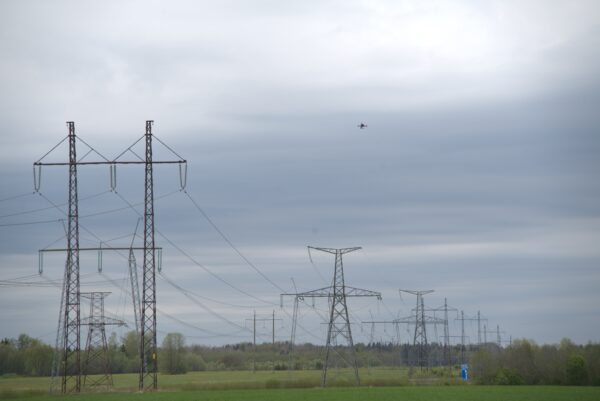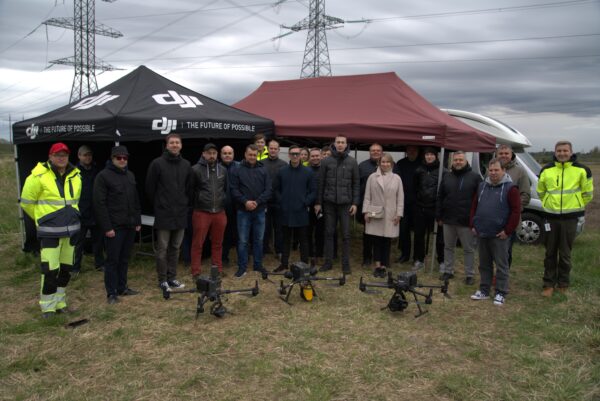The importance of severity levels in grid inspections
When inspecting power grids, prioritizing repairs is crucial. Not all issues are equal; some require immediate attention, while others pose no immediate threat. Understanding the severity of power line anomalies is key to efficient maintenance and long-term cost savings. That’s where Hepta’s AI-powered power grid software makes a difference.
By combining advanced imaging technologies with AI-enhanced analysis, we help electric utilities identify, categorize, and prioritize grid anomalies. This ensures critical issues are resolved promptly, while minor problems can be addressed strategically. Our mission is to deliver tailored smart grid inspection solutions that improve grid resilience and operational efficiency.
Worldwide Reach: Our solutions have been adopted by over 30 DSOs and TSOs in 23 countries, inspecting more than 3000 kilometers of power lines every month. These inspections yield measurable results, such as improving SAIDI scores by 300% (DTEK Grids) and reducing inspection cycles from 7 years to 2.5 years (Enefit Connect).
With this commitment to measurable impact, we’re helping electric utilities save an average of €3,000,000 annually. Central to this success is our ability to work closely with clients to implement flexible severity categorization systems.
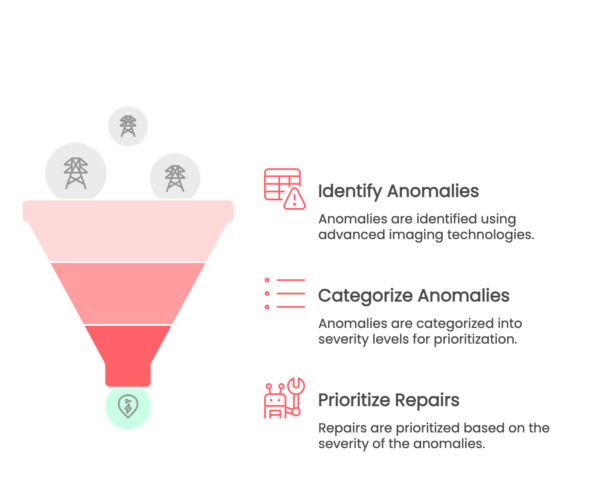
Prioritising power grid anomalies
Why Severity Levels Matter in Power Grid Software
When inspecting thousands of kilometers of power lines, a critical question arises: Which anomalies require immediate attention, and which can be addressed later? This is where Hepta Insights’ severity system comes into play, helping power grid inspection teams prioritize repairs efficiently and effectively.
Hepta’s 5-point severity system
Our default approach uses a 5-point severity system to categorize grid anomalies:
Severity 1: Minor issues with the repair plan during the next 5 years.
Severity 2: Moderate problems that require repairing during the next 3 years.
Severity 3: Moderate problems that require repairing during the next 18 months.
Severity 4: High critical issue that requires repairing during the next 3 months.
Severity 5: High critical issue that requires repairing as soon as possible.
However, flexibility is key. Some customers prefer alternative scales, such as a 3-point system or reversed numbering where 1 = most critical. We adapt to these needs, ensuring our power grid software integrates seamlessly with existing processes.
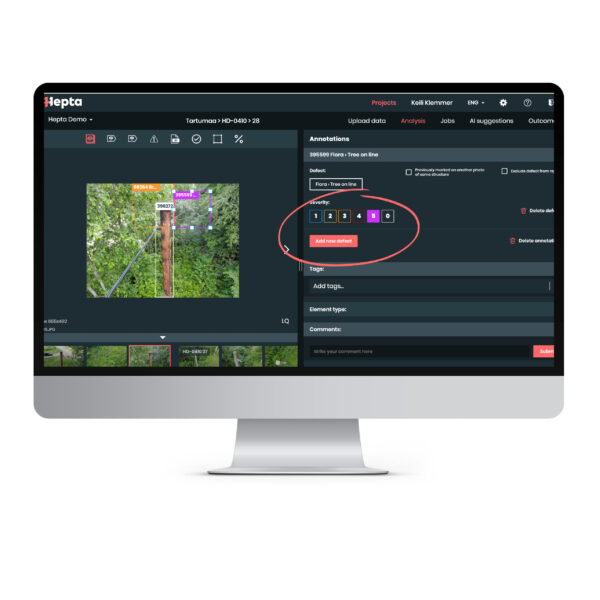 Defining severity levels: AI-powered grid inspection workflow
Defining severity levels: AI-powered grid inspection workflow
Examples of grid defects by severity level
Accurate classification of power line defects is essential for prioritizing maintenance and ensuring grid reliability. Below are real-world examples of different severity levels, illustrating how Hepta’s smart inspection system categorizes anomalies for effective maintenance with our power grid software:
Severity 1 (Low risk, preventative maintenance)
- Wooden tower top missing: The wooden tower top protects against water; a missing cap could lead to faster rotting. There is no immediate danger, but it should be recorded.
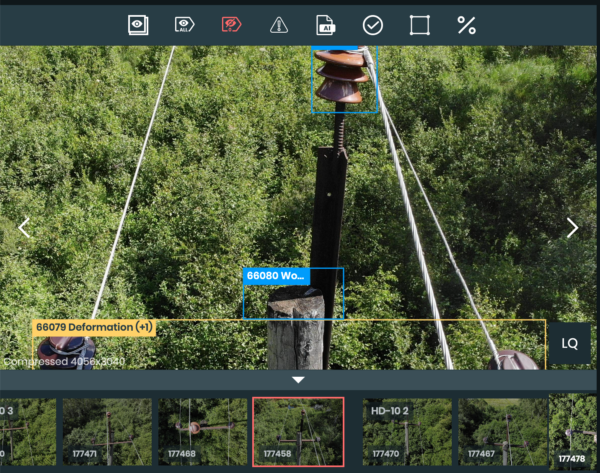
- Woodpecker damage: Gradual degradation of wooden structures, requiring long-term monitoring.
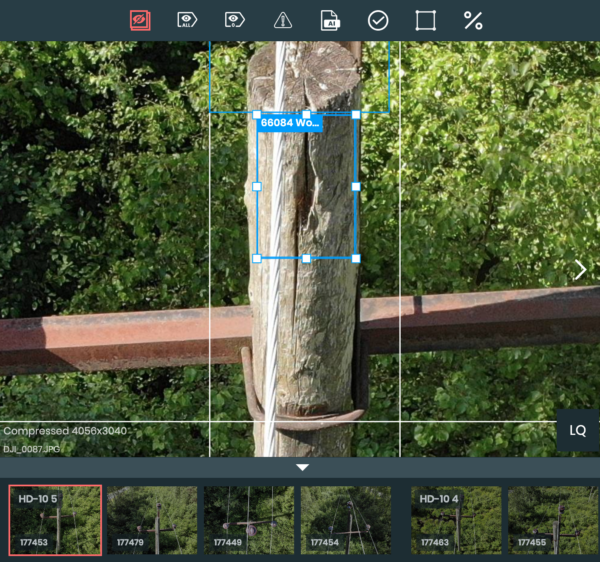
Severity 2 (Minor issues requiring attention)
- Insulator chipped: Cosmetic damage, still functional but should be monitored over time.
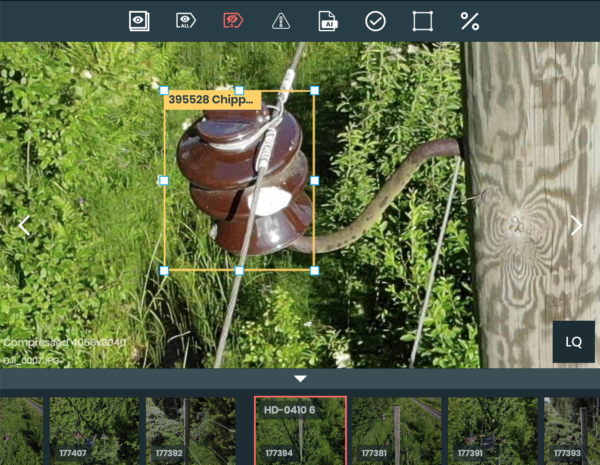
Severity 3 (Moderate issues)
- Wooden tower top rotten: Likely visible only from above, requiring monitoring and eventual replacement.
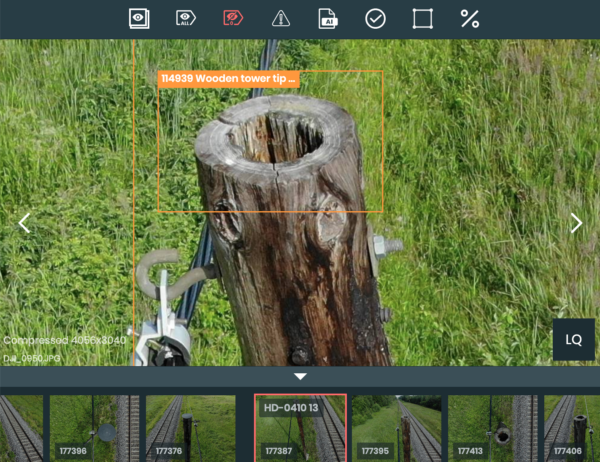
- Broken insulator: Partial damage, increasing risk of failure but not an immediate outage cause.
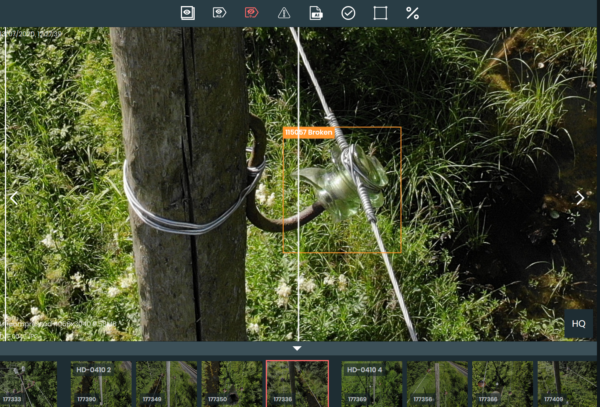
Severity 4 (Critical issues)
- Critical thermal issue: An Overheating component was detected via thermal imaging; it is not visible in RGB images.
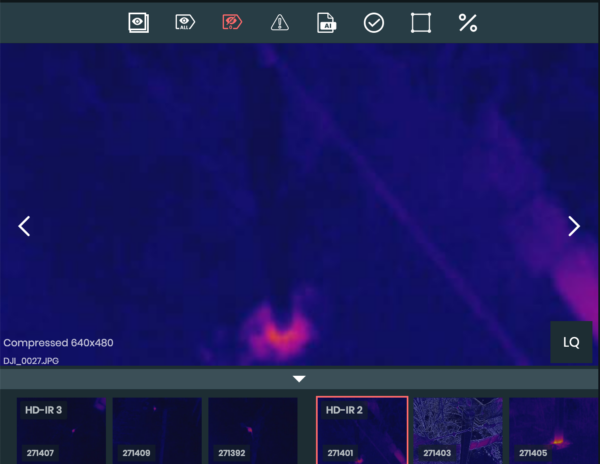
- It is the same tower as the RGB image.
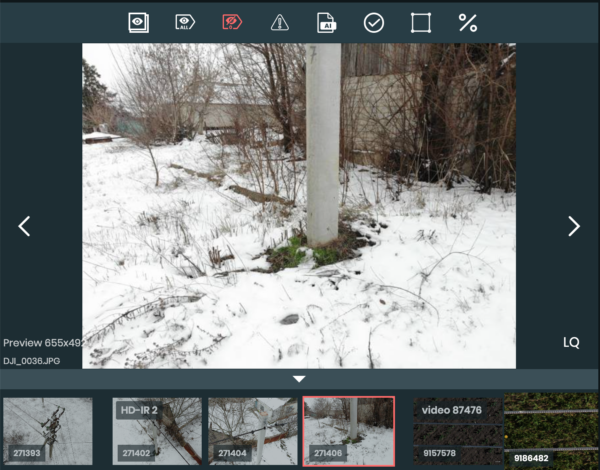
Severity 5 (Most critical)
- Rotten wooden pole: Structural failure risk; immediate replacement is required.
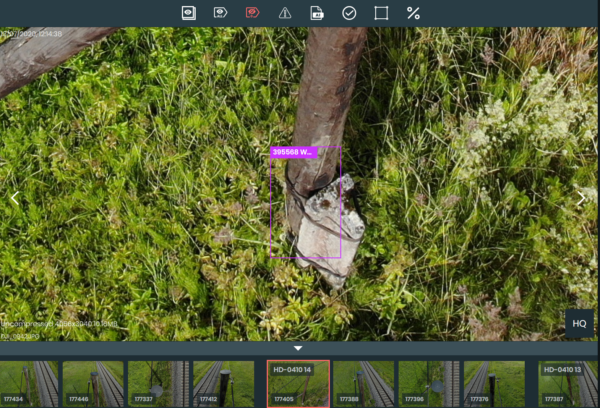
- Fallen tree on a line: Direct contact with power lines, causing outages and safety hazards.
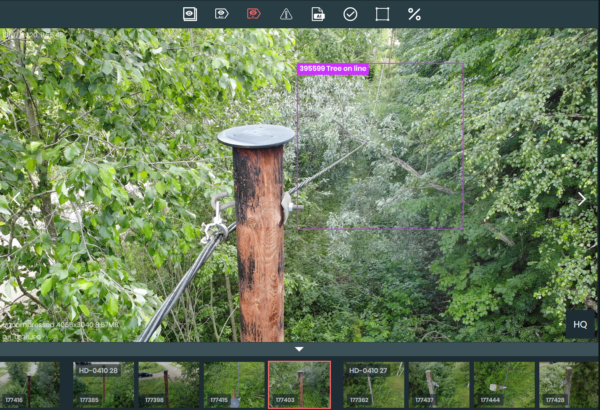
Severity distribution based on our customer base
The severity distribution is divided into five levels. Below, you can see how the volume of anomalies is distributed:
- 1% of anomalies fall into the severity 5 category, requiring immediate intervention to prevent failures.
- 4% of anomalies are classified as severity 4, representing significant risks that need urgent repairs.
- 18% of anomalies fall into severity 3, indicating moderate risks that require scheduled maintenance.
- 57% of anomalies are categorized under severity 2, representing low risks that should be addressed in routine maintenance.
- 20% of anomalies are categorized as severity 1, highlighting minor issues that require long-term monitoring.
This breakdown helps customers allocate resources more effectively, ensuring that the most critical issues are addressed while planning for long-term grid stability.
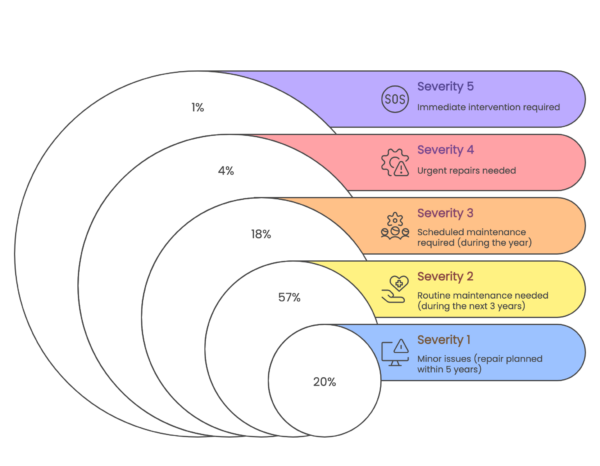
Anomaly severity breakdown based on our customer base
Conclusion: Adapting to customer needs
Our AI-powered power grid software helps electric utilities streamline inspection processes, reduce operational costs, and enhance reliability. Whether you need a traditional 5-point severity scale, a custom model, or a hybrid approach, Hepta Insights adapts to you.
Are you interested in learning how Hepta’s insights can transform your grid operations? Schedule a demo today to see how our AI-powered solutions can save time, reduce costs, and enhance grid resilience.

